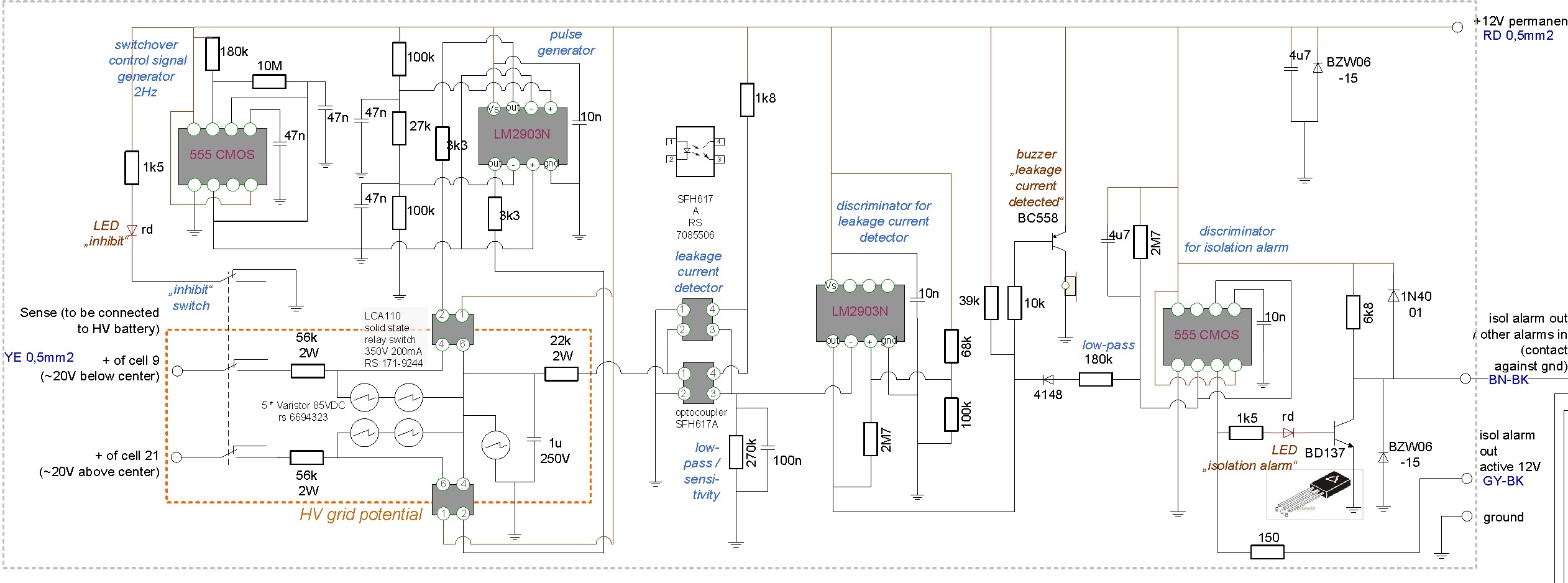User Tools
Sidebar
This is an old revision of the document!
isolation check
This circuit continuously checks whether traction grid and 12V grid are isolated against each other. ECE R-100 does not even require such a device for an EV vehicle, but TUEV in spite did require it. I also support this requirement because the existence of an isolation fault needs to be detected immediately to avoid dangerous “double fault” situations. Only then, one can rely that an isolation fault between traction circuit and car chassis will not have hazardous consequences.
For the isolation check, TUEV had following requirements:
* The device is not allowed to reduce the isolation resistance to a value lower than specified by R-100. Since the car has an AC motor, the harsher requirement of 500 Ohms/Volt applies - i.e. in this case 50kOhms.
* The device must be able to detect an isolation fault regardless to which point (e.g. positive or negative rail, or e.g. right in the center of the battery's cell chain) within the traction circuit.
* Besides an audible alarm, an isolation fault condition must also trigger the immobilizer, so that the car cannot be taken into operation any more. It is admissible that the immobilizer checks the fault condition at the time of turning on the ignition only, and ignores it if it occurs during driving.
* In case the isolation check creates interference, it must be possible to deactivate the device so that the “true” isolation resistance can also be measured (by an external appliance as specified in R-100).
Currently, there seems to be only one product on the market that is designed for EV application. This device offers a very high isolation resistance and the manufacturer claims that it is particularly immune against electrical distortions that are typical for an EV traction circuit. The drawbacks of this device however are its extreme price (around €500.- incl VAT) and its slow response time (specified up to 20 seconds). I therefore asked for permission to use a self-made isolation check device.
The first device, that I initially had installed, did not yet meet above requirements. An “AC coupling” based approach failed to deliver sufficient noise immunity, so my “dynamic DC coupling” device described in the following was already the third version I made.
Below the schematics of the isolation check circuit.
x
The “isolation check” circuit is continuously powered (i.e. not dependent on ignition). It's function can always be verified by a test button at the rear side of the rear battery box, that simulates a slight isolation fault (see chapter “rear traction battery box” below).


